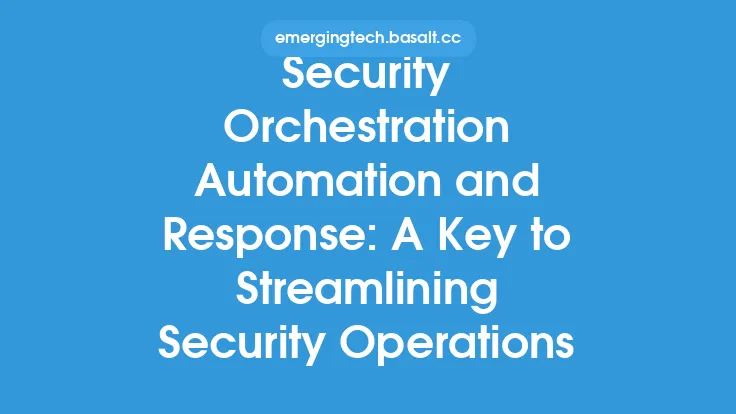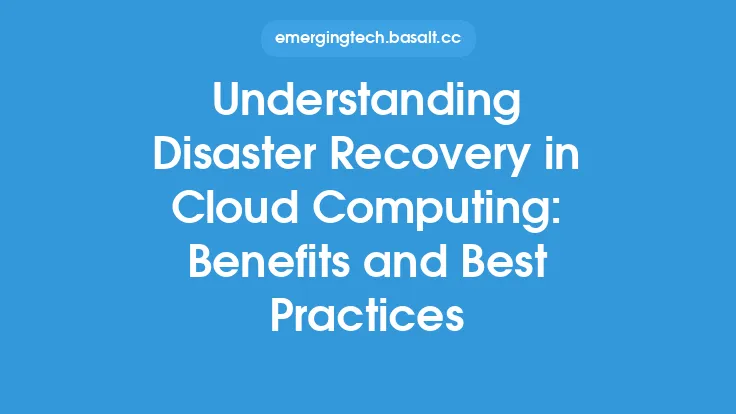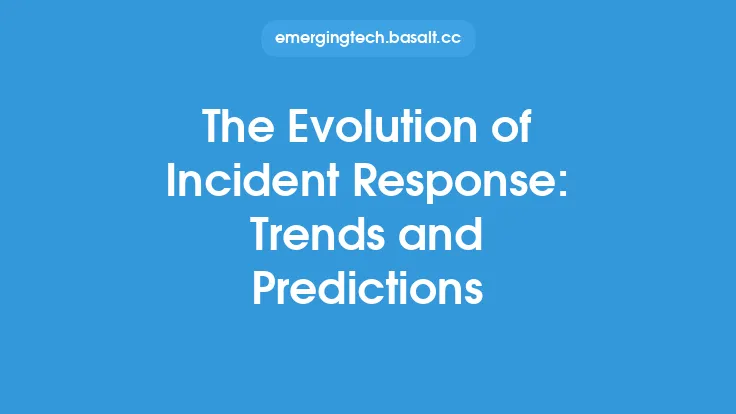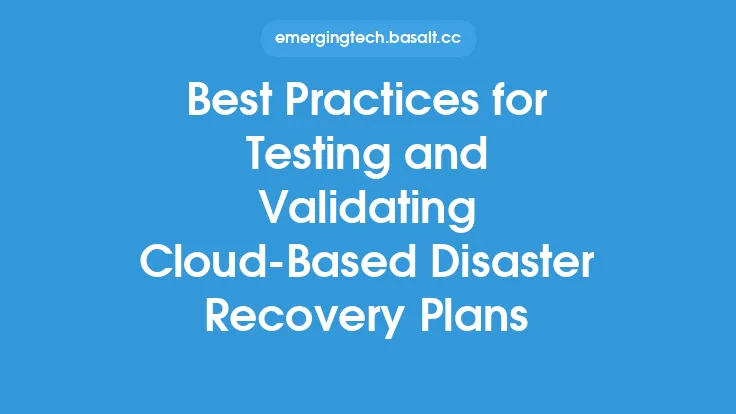In the realm of cybersecurity, two critical concepts often get intertwined but serve distinct purposes: Incident Response (IR) and Disaster Recovery (DR). While both are essential for maintaining the integrity and continuity of an organization's operations, they address different aspects of risk management and mitigation. Understanding the key differences between Incident Response and Disaster Recovery is crucial for organizations to develop effective strategies for handling cybersecurity incidents and disasters.
Introduction to Incident Response
Incident Response refers to the process by which an organization responds to and manages a cybersecurity incident, such as a data breach, ransomware attack, or unauthorized access to sensitive data. The primary goal of Incident Response is to quickly identify, contain, and eradicate the threat, minimizing the impact on the organization's operations and data. This involves a structured approach, including incident detection, analysis, containment, eradication, recovery, and post-incident activities. Incident Response teams work to understand the scope of the incident, assess the damage, and implement measures to prevent similar incidents in the future.
Introduction to Disaster Recovery
Disaster Recovery, on the other hand, focuses on the processes and procedures aimed at restoring an organization's IT infrastructure and operations following a disaster, which could be a natural disaster, a major cybersecurity incident, or any event that significantly disrupts business operations. The primary objective of Disaster Recovery is to ensure business continuity by minimizing downtime and data loss, thereby reducing the overall impact on the organization's ability to function and serve its customers. Disaster Recovery plans typically include strategies for backup and recovery of data, restoration of IT systems, and resumption of critical business processes.
Key Differences
Several key differences distinguish Incident Response from Disaster Recovery:
- Scope: Incident Response is focused on managing and mitigating specific cybersecurity incidents, while Disaster Recovery has a broader scope, focusing on restoring operations after any type of disaster.
- Goals: The primary goal of Incident Response is to contain and eliminate the threat, while Disaster Recovery aims to restore business operations as quickly as possible.
- Timing: Incident Response is typically initiated immediately upon detection of a cybersecurity incident, whereas Disaster Recovery plans are activated in response to a disaster that has significantly impacted the organization's ability to operate.
- Processes: Incident Response involves a detailed analysis of the incident, containment strategies, eradication of the threat, and recovery, whereas Disaster Recovery involves restoring systems, recovering data from backups, and resuming business operations.
Technical Aspects
From a technical standpoint, both Incident Response and Disaster Recovery require sophisticated tools and methodologies. Incident Response often involves the use of security information and event management (SIEM) systems to detect anomalies, intrusion detection systems (IDS) to identify potential threats, and incident response platforms to manage the response efforts. Disaster Recovery, on the other hand, relies heavily on backup and disaster recovery (BDR) solutions, cloud backup services, and virtualization technologies to quickly restore IT environments and ensure business continuity.
Planning and Preparation
Effective planning and preparation are critical for both Incident Response and Disaster Recovery. Organizations should develop comprehensive Incident Response plans that outline roles, responsibilities, and procedures for responding to cybersecurity incidents. Similarly, Disaster Recovery plans should be developed to ensure that the organization can quickly recover from a disaster, including procedures for data backup and recovery, system restoration, and communication strategies for stakeholders. Regular testing and updating of these plans are essential to ensure their effectiveness.
Integration and Overlap
While Incident Response and Disaster Recovery are distinct, they can overlap, especially in cases where a cybersecurity incident escalates into a full-blown disaster. For instance, a ransomware attack that encrypts critical data and disrupts operations could require both an Incident Response to contain the attack and a Disaster Recovery effort to restore systems and data. Therefore, it's essential for organizations to integrate their Incident Response and Disaster Recovery plans, ensuring a cohesive approach to managing risks and ensuring business continuity.
Conclusion
In conclusion, Incident Response and Disaster Recovery are two complementary but distinct aspects of an organization's cybersecurity and business continuity strategy. Understanding the differences between them is crucial for developing effective plans and procedures that can mitigate the impact of cybersecurity incidents and disasters. By recognizing the unique goals, processes, and technical aspects of each, organizations can better prepare for, respond to, and recover from incidents and disasters, ultimately protecting their operations, data, and reputation.





